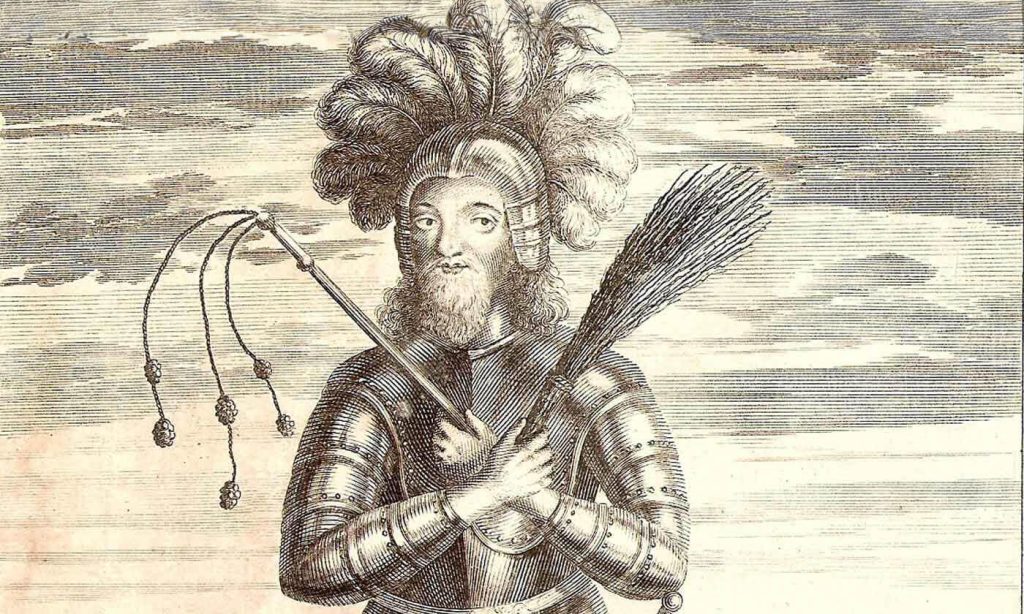Birger Magnusson was the ruler of Sweden for nearly two decades in the 1200s. He was never a Swedish king, but held the title of “jarl” (the equivalent of duke or earl) and ruled the country while his young son was the underage king. In 1252, he founded Stockholm, the capital of Sweden.
Birger was married twice and fathered several children. He died in 1266 and was buried in the abbey of Varnhem, Sweden. A son from his first marriage, Erik, and his second wife, Mechtild, were also buried in the abbey.
Finding the lost remains of Birger Magnusson
In the 1530s, the abbey church of Varnhem was partly destroyed by fire. During the restoration of the church, the tombstone on Birger’s grave was removed and the site of his grave was forgotten. In the early 20th century, his grave was rediscovered. A Swedish anthropologist examined the remains in 1920 and determined that they had indeed found the lost remains of Birger, his son Erik and his second wife Mechtild. The 13th century tombstone was replaced on the grave, but there were still several questions regarding the investigation from the 1920s. In 2002, the grave was reopened and genetic analyses were conducted to verify the identification of the remains.
Genetic analysis of the remains
Birger and his son Erik should share the same Y-DNA profile as Y-DNA is passed down from father to son, without any recombination at each generation. Three Y-DNA SNPs were analyzed from tooth samples from the remains of Birger and Erik. These SNPs represent 70.2% of the male lineages found in Sweden. The analysis showed that both Birger and Erik share the same Y-DNA profile, as would be expected for a father-son pair, and belong to Y-DNA haplogroup I1.
Erik was Birger’s son from his first marriage; hence there are no maternal relationships between the three individuals. Mitochondrial DNA (mtDNA) is passed down from mother to child along the direct maternal lineage, so is a useful genetic analysis to confirm or refute maternal relationships. There are three regions of the mtDNA that can be analyzed – HVR1, HVR2 and the coding region. This study sequenced the first hypervariable region (HVR1) from tooth samples from Birger, Mechtild and Erik. As expected, they have different mtDNA profiles. Birger is from the mitochondrial haplogroup H, Mechtild is haplogroup U5b1 and Erik is haplogroup Z1a.
Conclusions
These genetic analyses conclude that these remains do belong to Birger, Erik and Mechtild. However, as the DNA profiles were not compared to any reference samples (maternal or paternal descendants), it is possible that the graves belong to three other individuals with the same kind of biological relatedness. This is unlikely though, as the genetic data in conjunction with historical and anthropological evidence strongly supports the positive identification of the remains of Birger, Erik and Mechtild.

DNA Database Comparisons
The DNA tests conducted in this study have defined the mtDNA profiles and Y-DNA STR profiles of three prominent members of Swedish royalty. If you have taken the mtDNA HVR1 (Standard Maternal Ancestry) test, you can compare your DNA against these three individuals to see if you may have descended from one of the same maternal lineages. Alternatively, if you have taken the Y-DNA STR marker (Paternal Ancestry) test you can determine if you have descended from the paternal lineage as Birger Magnusson.
DNA Ancestry Project Features
Ancestry Test
Mitochondrial DNA sequencing
Y-DNA STR fragment analysis
Autosomal STR fragment analysis
Advanced ethnic origins report
Recent ancestry analysis
Ancient ancestry analysis
DNA Ancestry Projects
Relationship match
Relationship confirmation









